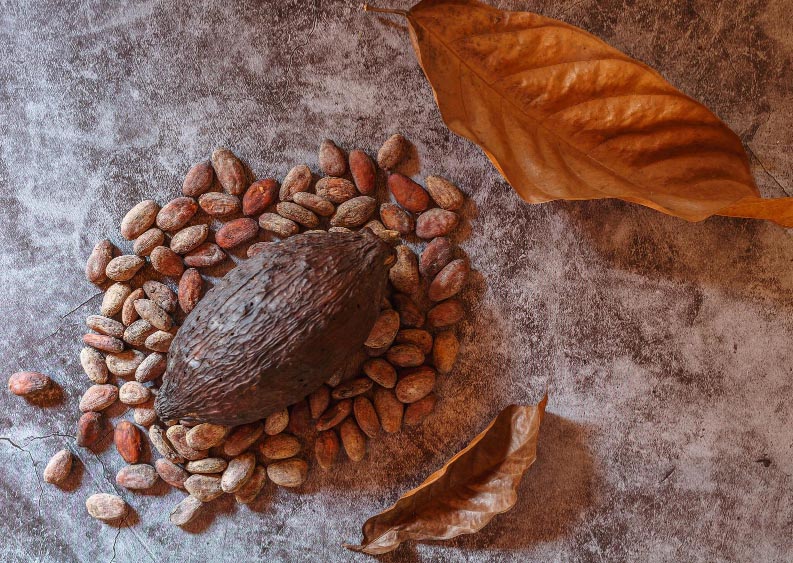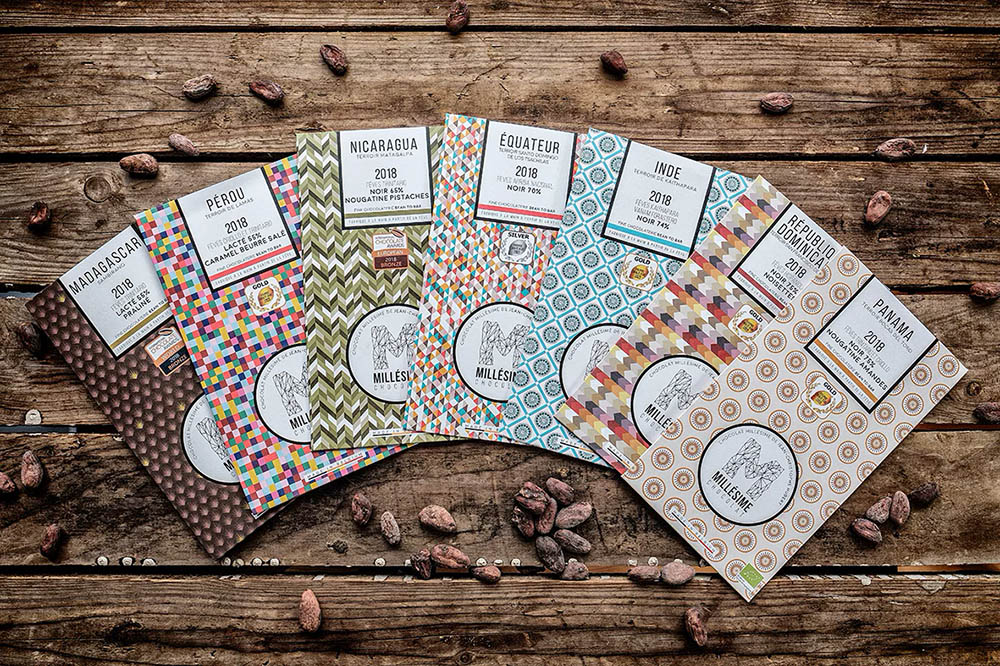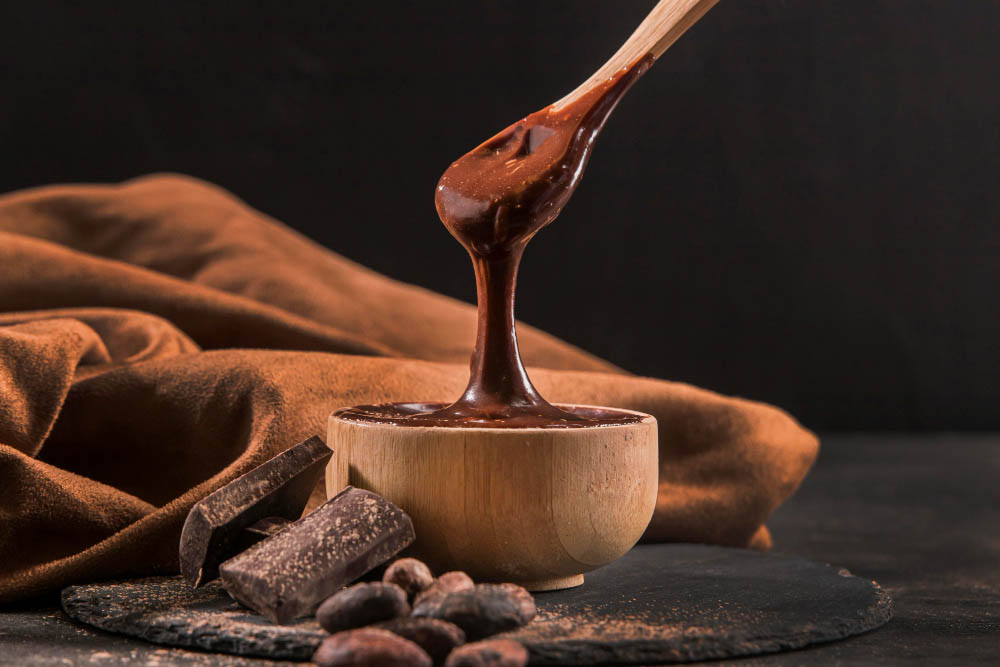Chocolate, we devour it at the slightest opportunity: at Easter, at Christmas, two squares here, a bar there… With pleasure or guilt, each French person eats 7 kg of it a year, with a clear preference for dark chocolate. But do you know how chocolate is made? 🤔 Things happen before the cocoa bean becomes a tablet! Quai Sud makes you discover all the secrets of making a good chocolate.
The origin of chocolate: the cocoa bean
To obtain a good chocolate, you must first good cocoa beans. Direction the tropics, because the cocoa tree likes a hot and humid climate. It grows in the shade of taller trees and its fruits, the pods, are harvested at full maturity twice a year, after the rainy season, when they are well filled with beans. Their taste, color and weight depend on the variety of cocoa tree:
- Le Stranger is the most robust and accounts for 80% of world production. Its cocoa is strong, its acid notes.
- Le Trinity, originating from the island of Trinidad, gives a fruity and low acid cocoa.
- Le Criollo is the rarest (5% of world production) and therefore the most sought after. Its cocoa is of great finesse, sweet and not very bitter.

The taste differs according to the variety of cocoa tree, but also according to its growing area. Colombia, Venezuela, Peru… Like wine, cocoa results from a terroir and has its great vintages. The beans do not all contain the same percentage of cocoa, and this must be taken into account to obtain a good chocolate. Then begins the long process of transformation that will take us from the bean to the tablet 🍫...
The stages of chocolate production
The first stage of transformation begins at the end of the field. The pods are opened with a machete to recover the cocoa beans, which are placed under banana leaves for a few days. Under the action of mucilage, the white, sugary pulp that protects them, the beans are fermenting and develop their first aromas. They are then dried in the sun to assert their taste, then sent to the chocolatier.
Once cleaned, the beans are roasted to reveal all their aromas, then coarsely crushed to obtain a crane pure origin, which can possibly be mixed with other nibs to balance the flavors (assembly). Then it's grinding : under the action of the stone millstones, the cocoa butter melts and a grainy and acid paste is obtained. At this stage, you can either remove the cocoa butter to obtain, after fine grinding, cocoa powder, or transform this dough into chocolate 😍.
Sugar, cocoa butter, a touch of vanilla and lecithin are added to the dough for taste and homogeneity, and tadam, chocolate ✨… Well almost. The dough is still lumpy, so we will grind it finely (refining) then knead it for several hours while hot (conching) to obtain a fine and smooth paste, with round flavors and intense aromas. It is then cooled on a marble surface, and once tempered, it is cast into blocks or tablets. Your melting love story with chocolate can then begin 🤎…
How do you recognize quality chocolate?
Each stage of processing is crucial to reveal the aromas of chocolate: a sufficiently long fermentation, the right roasting temperature, the right amount of sugar... But the control of the manufacturing process is not everything, the quality of the beans varies from one country to another. So how to objectively recognize a good chocolate from any chocolate? 🤔
Trust your senses first. A quality chocolate, well made, has a smooth, satin to shiny appearance. The tablet is dense, smooth to the touch and emits a loud "clack" when you break it: this is a sign of good storage temperature (18-20°C). On the nose, it gives off aromas of fruit, dried fruit, honey or spices, even caramel for a milk chocolate. Its taste lingers in the mouth for several minutes.
Then it's a matter of taste. Pure origin chocolates rather than blends, you will be able to identify the flavors linked to the terroir (woody, fruity, flowery, etc.) and to determine your preferences. If the beans come froman organic and fair trade plantation, it's even better, because the specifications are demanding in terms of quality. Finally, do not rely on the percentage of cocoa, it is not a guarantee of taste or quality, and consume your chocolate within 6 months to enjoy all its aromas.

Discover Vintage chocolate bars. A bar, a country, a region, a year: a great chocolate vintage! Our Belgian partner masters the entire chain from the bean to the bar to offer you the finest chocolates. To taste without any moderation 😋.


